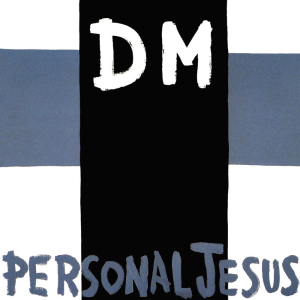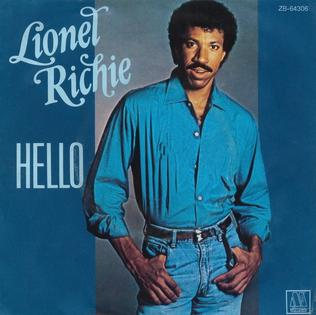 Released in 1981, Billy Idol’s “Dancing With Myself” captures the restless energy and punk-inspired bravado that would define his early solo career. Though Idol had already established himself as a member of the UK punk band Generation X, this track allowed him to transition into a bold, new sound that blended punk rock’s rebellious spirit with infectious danceable rhythms. Unlike many songs of the era, “Dancing With Myself” balances raw punk intensity with pop accessibility, creating a track that is simultaneously edgy and irresistibly catchy. The song’s lyrics, energetic vocal delivery, and minimalist yet propulsive instrumentation combine to make it a quintessential anthem of individualism and self-expression. It speaks to anyone who has found solace in their own company or sought to find joy in movement regardless of circumstance. Over four decades later, “Dancing With Myself” remains a testament to Billy Idol’s unique ability to channel youthful rebellion into music that transcends generational boundaries.
Released in 1981, Billy Idol’s “Dancing With Myself” captures the restless energy and punk-inspired bravado that would define his early solo career. Though Idol had already established himself as a member of the UK punk band Generation X, this track allowed him to transition into a bold, new sound that blended punk rock’s rebellious spirit with infectious danceable rhythms. Unlike many songs of the era, “Dancing With Myself” balances raw punk intensity with pop accessibility, creating a track that is simultaneously edgy and irresistibly catchy. The song’s lyrics, energetic vocal delivery, and minimalist yet propulsive instrumentation combine to make it a quintessential anthem of individualism and self-expression. It speaks to anyone who has found solace in their own company or sought to find joy in movement regardless of circumstance. Over four decades later, “Dancing With Myself” remains a testament to Billy Idol’s unique ability to channel youthful rebellion into music that transcends generational boundaries.
The genesis of “Dancing With Myself” traces back to Idol’s time with Generation X, particularly the band’s experimentation with blending punk energy with post-punk and new wave influences. While the UK punk scene of the late 1970s was often aggressive and politically charged, Idol sought to explore the more playful, kinetic side of punk. “Dancing With Myself” emerged as a product of that exploration—a song that celebrates liberation through music, dancing, and self-reliance. Its lyrics reflect themes of autonomy, joy, and defiance, encouraging listeners to embrace their individuality and take ownership of their happiness, even in solitude.
Musical Composition and Style
Musically, “Dancing With Myself” is deceptively simple yet incredibly effective. The song is built around a driving guitar riff that propels the track forward, providing both rhythm and melodic hooks. Steve New, who contributed guitar work for the recording, infused the riff with a percussive, almost staccato feel that emphasizes the song’s kinetic energy. The bassline underpins the guitar work with a steady pulse, while the drums keep a relentless, danceable beat that reinforces the song’s hypnotic momentum. The production, though minimalist by contemporary standards, allows each instrument to breathe, giving the track clarity and punch.
Billy Idol’s vocal delivery is central to the song’s appeal. His sneering, confident tone embodies both punk defiance and pop charisma. He oscillates between rapid, almost spoken verses and drawn-out, melodic choruses, creating a dynamic sense of tension and release. The vocal phrasing mirrors the song’s theme of solitary movement—the feeling of dancing energetically alone yet fully engaged with the music. Idol’s delivery ensures that the song’s message of individual empowerment resonates with listeners, even decades after its release.
The Lyrics: Independence on the Dance Floor
Lyrically, “Dancing With Myself” celebrates self-reliance, independence, and the liberating power of music. Lines such as “If I had the chance, I’d ask the world to dance with me” reflect a playful mix of isolation and desire for connection. The repeated chorus—“Dancing with myself”—is both literal and metaphorical, emphasizing the joy found in solitary expression and the resilience of self-sufficiency. In a broader sense, the song captures the post-punk era’s fascination with individualism, rebellion, and the freedom to define oneself outside of societal norms.
The song also carries an undercurrent of youthful defiance, characteristic of Billy Idol’s early work. It encourages listeners to reject conformity and embrace their own impulses, celebrating the cathartic release of movement and music. This theme of self-empowerment made the track relatable to a generation navigating the uncertainties of post-punk life, economic hardship, and shifting cultural norms.
1981: Cultural Context
When “Dancing With Myself” was released in 1981, the musical landscape was in flux. Punk rock’s initial explosion had begun to fragment, giving rise to post-punk, new wave, and synth-infused pop. Artists were experimenting with combining the raw energy of punk with more melodic, danceable forms, and Billy Idol’s track exemplifies this fusion. The song’s cross-genre appeal allowed it to reach both punk purists and mainstream audiences, bridging the gap between underground rebellion and commercial accessibility.
The early 1980s were also a period of cultural experimentation in fashion, visual style, and performance. Idol’s image—leather jackets, spiked hair, and a sneering, confident persona—complemented the song’s aesthetic perfectly. He embodied the post-punk ideal of the rebellious, stylish outsider, and “Dancing With Myself” became an anthem for those who felt both alienated and empowered by their individuality.
The Song’s Impact and Legacy
While “Dancing With Myself” was initially released in the UK under Generation X’s banner, it achieved wider recognition after Billy Idol re-recorded it for his solo career in 1981. This version featured additional production flourishes, including a tighter mix and a more pronounced rhythm section, which helped the song find international success. Over time, it became one of Idol’s signature tracks, cementing his reputation as a solo artist capable of blending punk attitude with pop sensibility.
The song has had a lasting influence on both rock and pop music. Its combination of minimalist instrumentation, infectious rhythm, and rebellious lyrics inspired subsequent generations of musicians, from alternative rock acts to pop-punk bands. Idol’s approach to melody and harmony in a punk context demonstrated that punk could be playful, catchy, and danceable without losing its edge.
Live Performances and Visual Style
“Dancing With Myself” became a staple of Billy Idol’s live performances, often serving as a high-energy opener or crowd-pleasing centerpiece. In concert, the song’s propulsive rhythm and call-and-response elements invite audience participation, creating an atmosphere of collective celebration even as the lyrics emphasize solitary enjoyment. Idol’s stage persona—combining swagger, theatricality, and punk sensibility—enhances the song’s impact, ensuring that it translates seamlessly from recording studio to live venue.
The accompanying music video, released during the early MTV era, further solidified the song’s cultural impact. Featuring rapid cuts, dynamic dancing, and Billy Idol’s charismatic presence, the video captured the post-punk aesthetic of the early 1980s. It helped establish Idol as a visual as well as musical icon, proving that image and performance could amplify the emotional and cultural resonance of a song.
Why “Dancing With Myself” Endures
Decades after its release, “Dancing With Myself” remains a relevant anthem for self-expression, independence, and energetic rebellion. Its musical simplicity allows it to be immediately accessible, while its lyrical and performative complexity ensures that listeners can engage with it on multiple levels. The song’s themes of empowerment and autonomy are timeless, resonating with anyone seeking to embrace their individuality in the face of social pressure or personal uncertainty.
Additionally, its influence on modern rock, punk, and pop cannot be overstated. The fusion of melodic sensibility with punk energy paved the way for later genres, including alternative rock, pop-punk, and dance-rock. Many contemporary artists cite Billy Idol’s work, and specifically “Dancing With Myself,” as formative, highlighting its enduring relevance in both musical and cultural contexts.
Conclusion: A Timeless Anthem of Rebellion and Joy
Released in 1981, Billy Idol’s “Dancing With Myself” is a song that transcends time and genre. Combining post-punk energy, infectious melody, and lyrics that celebrate independence and self-expression, it stands as a testament to Idol’s innovative approach to music and performance. The track’s driving rhythm, distinctive guitar riffs, and harmonized vocals create an irresistible momentum, while the lyrics encourage listeners to embrace individuality, joy, and personal empowerment—even when alone.
Its impact on music and culture has been lasting. “Dancing With Myself” helped define the early 1980s post-punk landscape, inspired countless artists, and remains a staple of live performance and popular playlists. Beyond its commercial success, the song endures because it speaks to a fundamental human desire: to find liberation, joy, and identity through movement and self-expression. Billy Idol captured that spirit in 1981, and more than four decades later, “Dancing With Myself” continues to invite listeners to join in—or stand proudly alone—and celebrate the power of dancing through life on their own terms.


